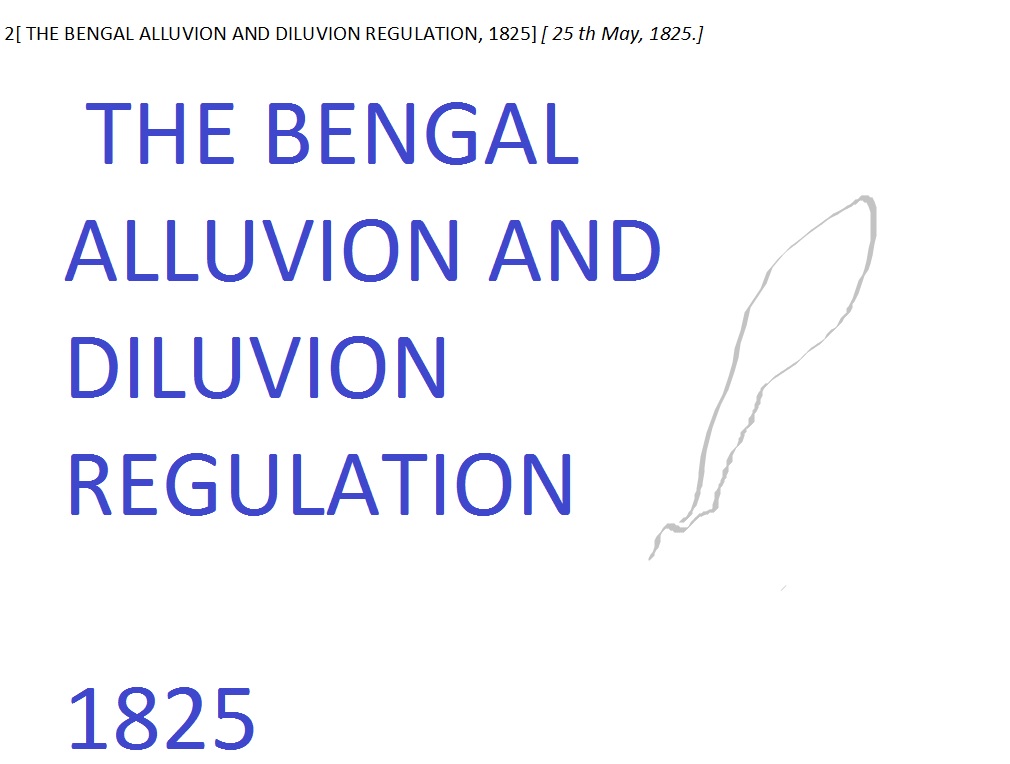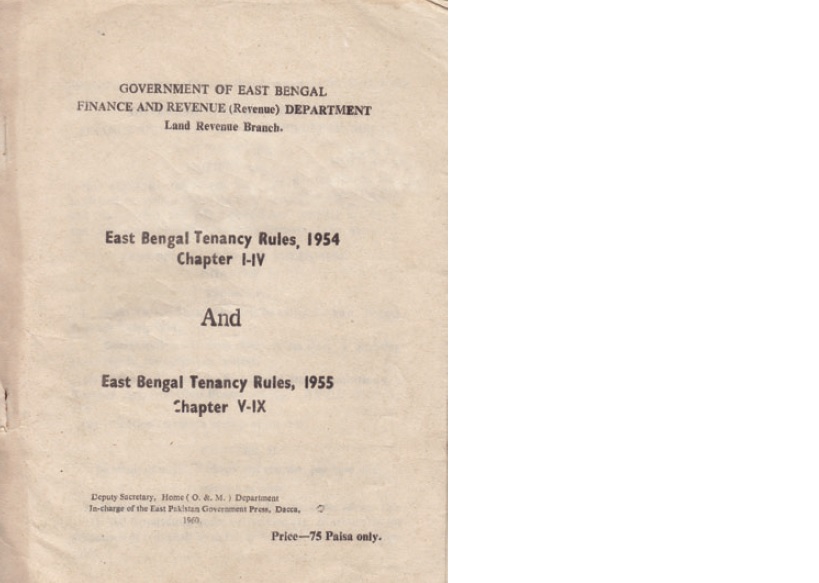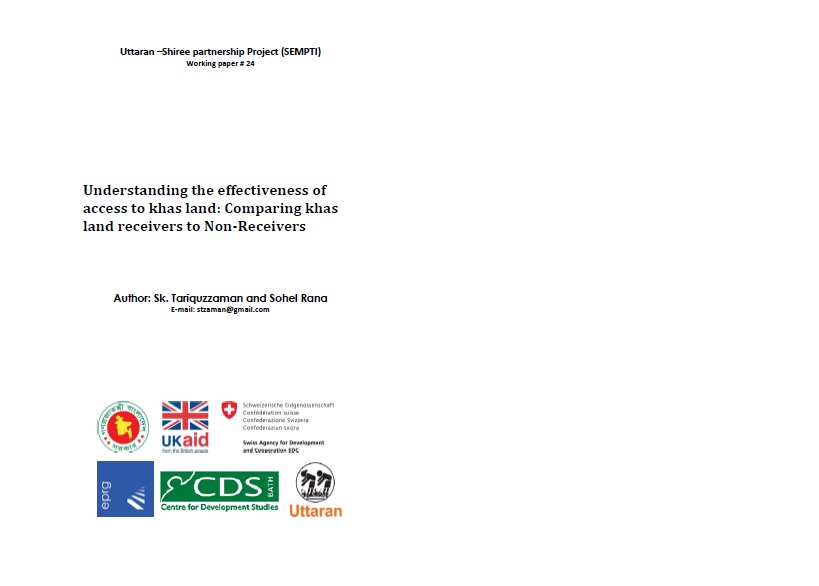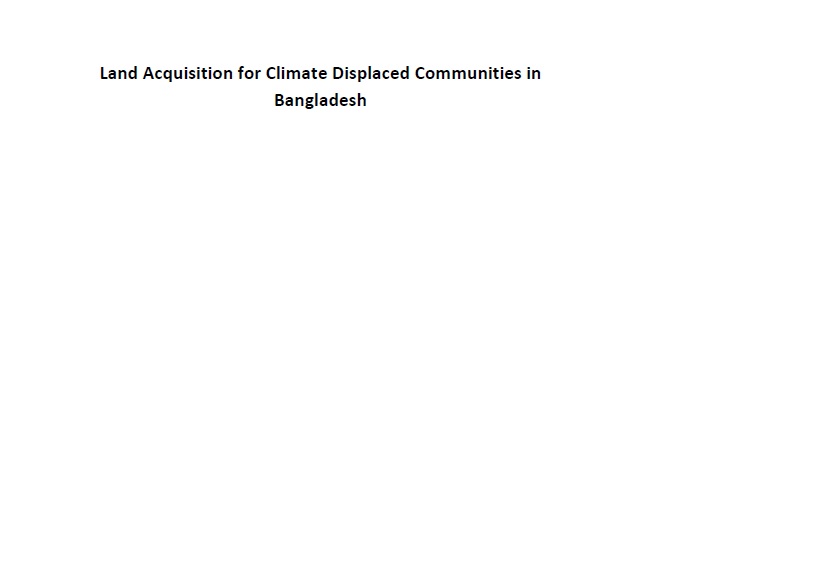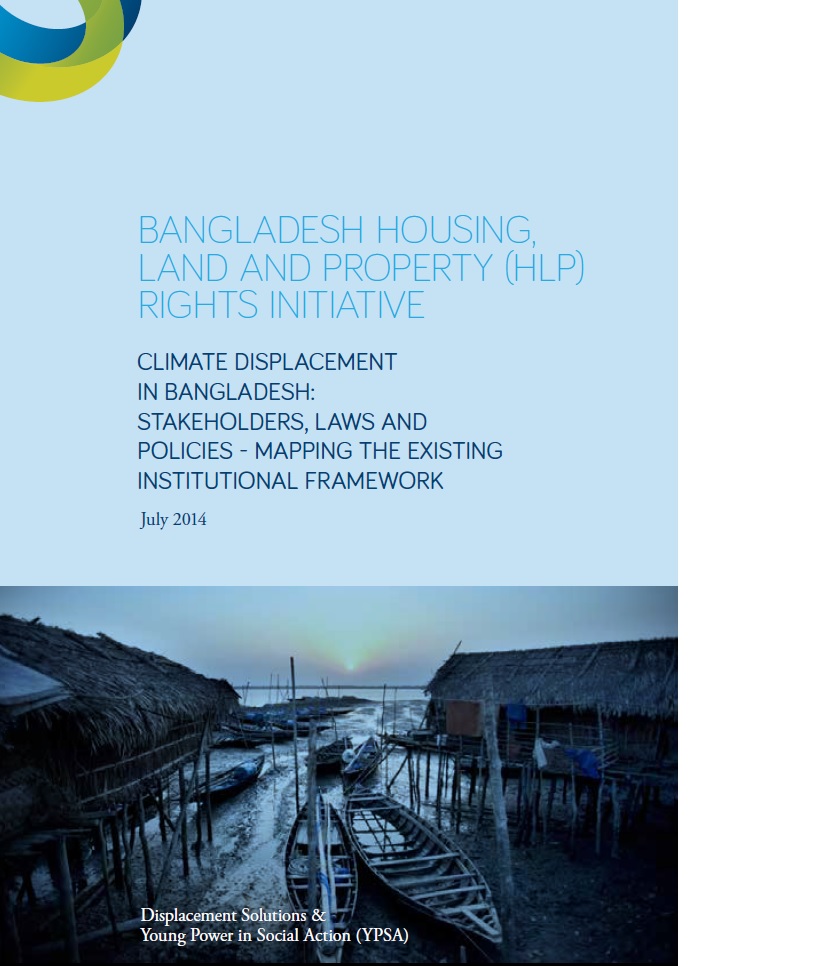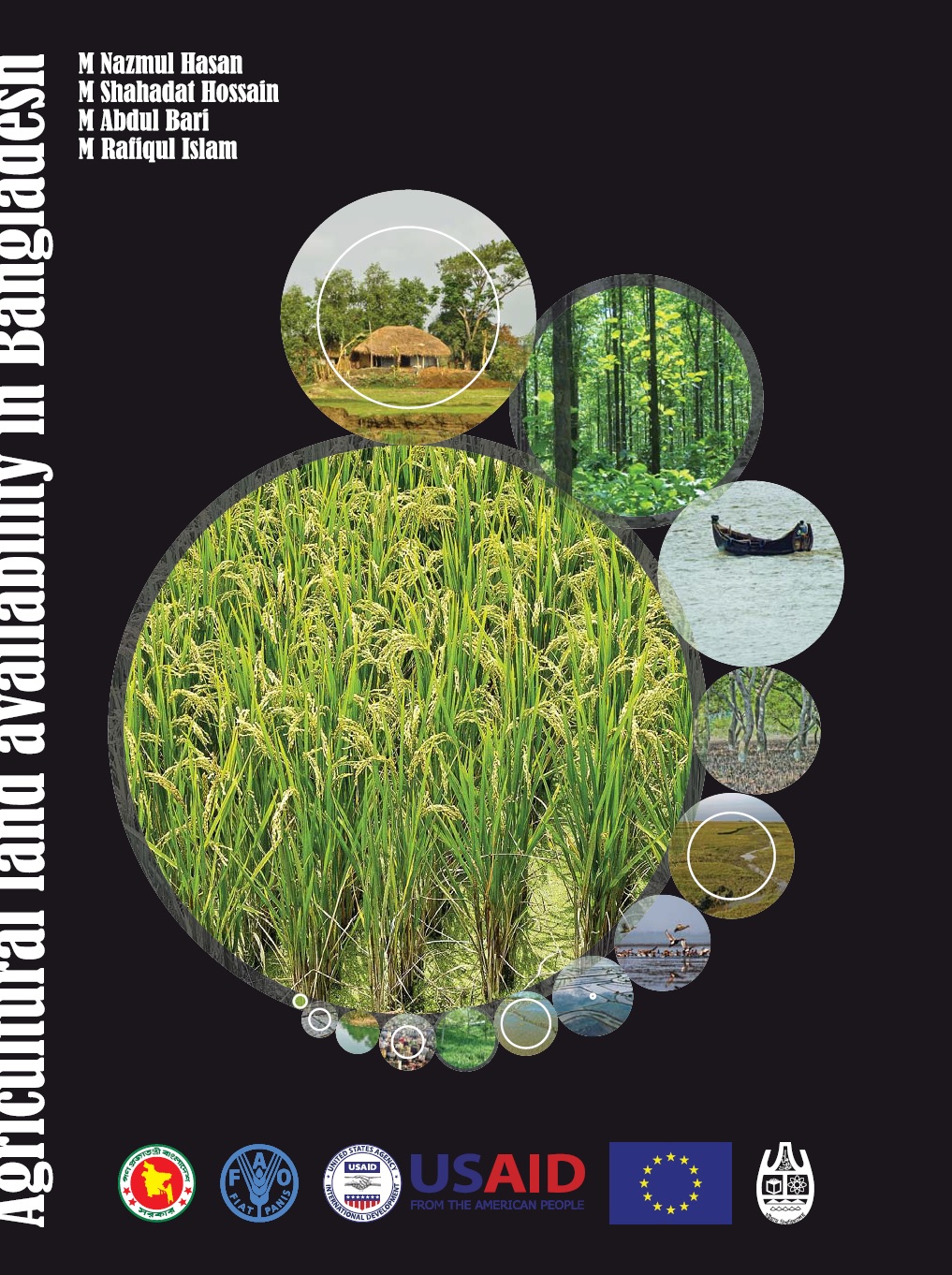
Topics and Regions
Mamun Ur Rashid has strong experiences on land administration and management in partnership with Ministry of Land and Department of Land Records and Survey, Bangladesh. He is knowledgeable and experienced with number of participatory tools and methods in order to selection of state land, women's access over the land and vested property act etc.
He has been working with non profit sector on human rights and governance for last 16 years, mostly project development and management roles. He has experiences of direct land project implementation in order to protect rights of women, widow, religious minorities, indigenous, elderly and disable land owners. He is one of the team member of National land policy formulation committee, National steering committee on land reform, National Budget Advocacy Group etc.
Details
Public Email
Location
Contributions
Displaying 41 - 50 of 63THE BENGAL ALLUVION AND DILUVION REGULATION, 1825
In consequence of the frequent changes which take place in the channel of the principal rivers that intersect the Provinces immediately subject to the Presidency of Fort Willima, and the Shifting of the sands which lie in the beds of those rivers, chars or small islands are often thrown up by alluvion in the midst of the stream or near one of the banks, and large portions of land are carried away by an encroachment of the river on one side, whilst accessions of land are at the same time, or in subse quent years, gained by dereliction of the water on the opposite side; similar instances of
East Bengal Tenancy Rules 1954
The East Bengal State Acquisition and Tenancy Act of 1950 (also known as the East Pakistan Estate Acquisition Act 1950) was a law passed by the newly formed democratic Government of East Bengal in the Dominion of Pakistan (present day Bangladesh). The bill was drafted on 31 March 1948 during the early years of Pakistan and passed on 16 May 1951. Before passage of the legislature, landed revenue laws of Bengal consisted of the Permanent Settlement Regulations of 1793 and the Bengal Tenancy Act of 1885.
Understanding the effectiveness of access to khas land: Comparing khas land receivers to Non-Receivers
This study highlights that access to khasland is a strongly political process where the collective movement played a pivotal role in shaping the livelihoods of land receivers. The paper shows that 1. khasland provides insurance and security through creating diverse income opportunities which can often mitigate the negative and long term impacts of shocks and allow khasland receivers to cope better with shocks 2. khasland allocation incentivises women’s engagement with labouring activities, household asset management, as well as their mobility within the village 3.
Making Productive Use of Khas land: Experiences of Extreme Poor Households
This study investigated three key aspects influencing negotiations for the purpose of understanding how the gains were made from the khas (state) land by extremely poor households. These were: 1) if and how intra-household dynamics and characteristics impacted the negotiations; 2) if and how the local socio-political situation and the location of the land bear influence and 3) how the extremely poor‘s relationships with external agencies including markets, the state and institutions have an impact on the negotiation process and how the land is made productive.
The Viability of the Chittagong Hill Tracts as a destination for Climate Displaced Communities in Bangladesh
This report explores in detail the many legal, social, historical, political, economic and other factors involved in the land acquisition process in Bangladesh. The report also examines how land across Bangladesh can most easily, affordably and fairly be acquired and accessed by civil society groups and climate displaced communities in Bangladesh. The study will also this report assesses the viability of the Chittagong Hill Tracts (CHT) as a possible permanent destination for the relocation of climate displaced communities.
Land Acquisition for Climate Displaced Communities in Bangladesh
This report explores in detail the many legal, social, historical, political, economic and other factors involved in the land acquisition process in Bangladesh. The report also examines how land across Bangladesh can most easily, affordably and fairly be acquired and accessed by civil society groups and climate displaced communities in Bangladesh. The study will also assess the possibility of climate displaced persons accessing land through private or public donation, including by government officials, private individuals or corporations.
Land Availability for Climate Displaced Communities in Bangladesh
In order to face the challenge of mass migration and displacement as a result of the effects of
climate change, it is essential that Bangladesh is adequately prepared so that the vast majority of those displaced will be supported with adequate resettlement and rehabilitation schemes, whilst also ensuring that their basic human rights are respected. One of the major
CLIMATE DISPLACEMENT IN BANGLADESH: STAKEHOLDERS, LAWS AND POLICIES - MAPPING THE EXISTING INSTITUTIONAL FRAMEWORK
Climate change is one of the greatest challenges facing the world today and the individuals and communities who face being displaced from their homes and lands as a result of climate change are the human faces of this tragedy. Bangladesh is one of the countries most vulnerable to the impacts of climate change. The IPCC and other expert bodies have repeatedly identified Bangladesh as one of the countries most threatened by climate change.
Agriculture land availability in Bangladesh
The research aim is to detect land cover changes of Bangladesh using satellite remote sensing technology. More specifically the research objectives are to a) quantify how the availability of agricultural land has evolved since independence; b) quantify how the availability and allocation of land to various uses has evolved at national and sub-national levels since independence; and c) quantify land lost and gained due to various factors.

